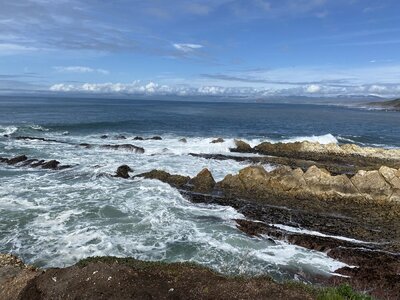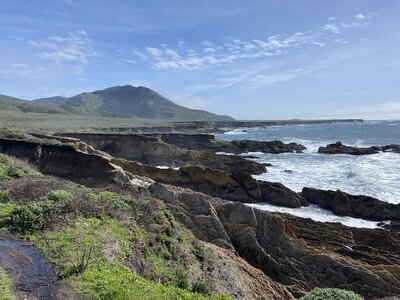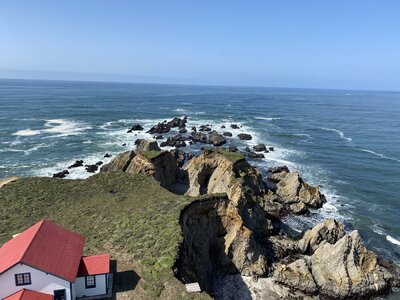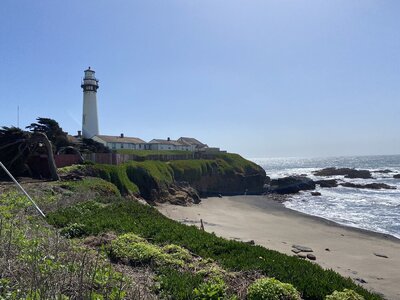I never hung my frames, but rather coated them once attached to the keel. I would have never imagined a frame falling would break it, but you have shown that’s possible! Of course my work area has carpet.  Anyway, I am sure you will recover just fine, no worse for wear.
Anyway, I am sure you will recover just fine, no worse for wear.
You are using an out of date browser. It may not display this or other websites correctly.
You should upgrade or use an alternative browser.
You should upgrade or use an alternative browser.
Kingfisher 1770 1:48 POF
- Thread starter dockattner
- Start date
- Watchers 136
Paul, thanks for the info on different types of glue. Enjoying your build. Magic Mike
- Joined
- Oct 15, 2017
- Messages
- 1,038
- Points
- 443

Paul, I ordered the new Byrnes variable speed 4 inch sander as soon as it was available. Like all Byrnes tools it is a wonderful, precision machine. In my opinion, there is one caveat. It is a little under powered. At least from my perspective, is more of a finishing sander. When I pressed a 1"x 1"x 2" piece of pear stock it would reduce the RPM. This was not with a significant amount of pressure. I had a couple of phone calls with Donna, Jim's wife to be sure that this was by design. She conferred with Jim and stated it was. She offered to exchange it for the original non variable speed 5" sander, but I decided to stick with it. I actually didn't require variable speed, nor being able to reverse the motor and disc direction. I bought it for future scalability. I believe the VS 4" has a 90volt motor. While the original 5" sander uses a 1/3 HP motor.Another option is one of the two disc sanders made by Jim Byrnes - they already have the edge of the disc available (one is fixed speed and the other is a bitr smaller and variable speed). But they come at a premium (I have his thickness sander and his little table saw - the quality of the build is fantastic).
The only other challenge I found was the lack of independent sources of 4" self adhesive sanding discs. Could find tons of hook-n-loop, but self adhesive not so much. McMasters had some available, at a premium.
I do love the machine. It will just take a bit more time for some jobs. I would make one suggestion. If you don't require variable speeds or to run the disc in reverse, I would go with the original. It has all of the other abilities to sand complex angles and with much more power.
Let me know if you have any questions on it.
Kurt Konrath
Kurt Konrath
Ken, you could buy standard 5" and cut then down using the old pad as pattern.
Thank you Ken. I'm sure the members of our forum will find your observations helpful.Paul, I ordered the new Byrnes variable speed 4 inch sander as soon as it was available. Like all Byrnes tools it is a wonderful, precision machine. In my opinion, there is one caveat. It is a little under powered. At least from my perspective, is more of a finishing sander. When I pressed a 1"x 1"x 2" piece of pear stock it would reduce the RPM. This was not with a significant amount of pressure. I had a couple of phone calls with Donna, Jim's wife to be sure that this was by design. She conferred with Jim and stated it was. She offered to exchange it for the original non variable speed 5" sander, but I decided to stick with it. I actually didn't require variable speed, nor being able to reverse the motor and disc direction. I bought it for future scalability. I believe the VS 4" has a 90volt motor. While the original 5" sander uses a 1/3 HP motor.
The only other challenge I found was the lack of independent sources of 4" self adhesive sanding discs. Could find tons of hook-n-loop, but self adhesive not so much. McMasters had some available, at a premium.
I do love the machine. It will just take a bit more time for some jobs. I would make one suggestion. If you don't require variable speeds or to run the disc in reverse, I would go with the original. It has all of the other abilities to sand complex angles and with much more power.
Let me know if you have any questions on it.
Hi KenPaul, I ordered the new Byrnes variable speed 4 inch sander as soon as it was available. Like all Byrnes tools it is a wonderful, precision machine. In my opinion, there is one caveat. It is a little under powered. At least from my perspective, is more of a finishing sander. When I pressed a 1"x 1"x 2" piece of pear stock it would reduce the RPM. This was not with a significant amount of pressure. I had a couple of phone calls with Donna, Jim's wife to be sure that this was by design. She conferred with Jim and stated it was. She offered to exchange it for the original non variable speed 5" sander, but I decided to stick with it. I actually didn't require variable speed, nor being able to reverse the motor and disc direction. I bought it for future scalability. I believe the VS 4" has a 90volt motor. While the original 5" sander uses a 1/3 HP motor.
The only other challenge I found was the lack of independent sources of 4" self adhesive sanding discs. Could find tons of hook-n-loop, but self adhesive not so much. McMasters had some available, at a premium.
I do love the machine. It will just take a bit more time for some jobs. I would make one suggestion. If you don't require variable speeds or to run the disc in reverse, I would go with the original. It has all of the other abilities to sand complex angles and with much more power.
Let me know if you have any questions on it.
I bought the new variable speed sander and have to say that I am extremely happy with it (I did not have the previous model though)
One great advantage that I see, living in France, is that it is a DC motor hence works both on 110V and 220V
Titebond is amazing, but I have found best results come from wetting both surfaces, which only leads to more squeeze-out. On furniture projects, I simply scrub at the squeeze-out with a soft-bristle toothbrush and water and leave everything in-clamp until thoroughly dry, but that approach seems less ideal on an a scale model. Experience is my enemy, here, as I haven't made the transition to wood modeling yet.Thanks, everyone for your 'likes' and 'laughs' and your thoughtful and wise posts. I appreciate that you have joined me on this journey with all its ups and downs along the way. Our family dinner last night was a blast and it was a suitable antidote to any feelings of frustration over a hobby...
If anyone is interested... I have been using a glue called Weldbond on the large timbers of the centerline. It is quite thick and can be debonded (water if the bond is fresh, acetone if the bond is fully cured). I chose it because excess glue can be easily scraped off the joints after setting.
But Weldbond is so thick I doubted its ability to soak into endgrain so for the frames I have been using Titebond (the translucent wood glue version). This glue advertises itself as being stronger than the wood itself and I think that is true based on some of the breaks. But like most things its effectiveness is measured by the skill of the operator (me), so it is clear that in some cases I did not create an effective bond. Why not use Titebond everywhere? It is very difficult to remove the cured excess - it does not scrape off the way Weldbond does.
Paul, I switched to Weldbond after getting frustrated with Titebond drying yellowish in color, whereas Weldbond dries transparent. I guess Titebond makes a clear glue as well, but I have not tried it. Weldbond is very good glue for wood in my experience. I have built two ships with it so far, and no issues! However you are gluing the end grain of all those frame pieces, which soaks up glue, paint or anything else. That said you have to put the glue on liberally and press tight and worry about scraping or wiping squeeze out after the fact. I would carefully pin the joints by cross drilling from the side, with a very small diameter hole and use brass pins and sand flush afterwards. If you are opposed to brass, the treenails will accomplish the same, but will be less strong IMO. Once again I am sure you will find an elegant solution. Practice on a test piece first!Thanks, everyone for your 'likes' and 'laughs' and your thoughtful and wise posts. I appreciate that you have joined me on this journey with all its ups and downs along the way. Our family dinner last night was a blast and it was a suitable antidote to any feelings of frustration over a hobby...
If anyone is interested... I have been using a glue called Weldbond on the large timbers of the centerline. It is quite thick and can be debonded (water if the bond is fresh, acetone if the bond is fully cured). I chose it because excess glue can be easily scraped off the joints after setting.
But Weldbond is so thick I doubted its ability to soak into endgrain so for the frames I have been using Titebond (the translucent wood glue version). This glue advertises itself as being stronger than the wood itself and I think that is true based on some of the breaks. But like most things its effectiveness is measured by the skill of the operator (me), so it is clear that in some cases I did not create an effective bond. Why not use Titebond everywhere? It is very difficult to remove the cured excess - it does not scrape off the way Weldbond does.
- Joined
- Oct 11, 2021
- Messages
- 735
- Points
- 403

Hi Paul, I had some catching up to do. I loved your family diner with only peanut butter, beer and non-gluten bread with toppings of sugerless jelly. It must have tasted excellent. Water is running through my mouth thinking what the desert must have been..
On the broken frames part. Ouch! I believe that the Castello Boxwood as a tight grained wood with high density is not very well suitable for the thick Wellbond glue. Stephan mentioned animal hide glue. This is great glue used by furniture repair shops. It's a glue thats need to be heated and applied with a brush. It becomes very hard and leaves a transparant bond. Then the grain part breaking, all has been said about that.
I hope you can repair the parts or start over and make new ones!
good luck,
Peter
On the broken frames part. Ouch! I believe that the Castello Boxwood as a tight grained wood with high density is not very well suitable for the thick Wellbond glue. Stephan mentioned animal hide glue. This is great glue used by furniture repair shops. It's a glue thats need to be heated and applied with a brush. It becomes very hard and leaves a transparant bond. Then the grain part breaking, all has been said about that.
I hope you can repair the parts or start over and make new ones!
good luck,
Peter
Thanks Dean. The Titebond transparent dries crystal clear. I agree that adding some treenails is the way to go. I’ve been drawing down boxwood strips in preparation.Paul, I switched to Weldbond after getting frustrated with Titebond drying yellowish in color, whereas Weldbond dries transparent. I guess Titebond makes a clear glue as well, but I have not tried it. Weldbond is very good glue for wood in my experience. I have built two ships with it so far, and no issues! However you are gluing the end grain of all those frame pieces, which soaks up glue, paint or anything else. That said you have to put the glue on liberally and press tight and worry about scraping or wiping squeeze out after the fact. I would carefully pin the joints by cross drilling from the side, with a very small diameter hole and use brass pins and sand flush afterwards. If you are opposed to brass, the treenails will accomplish the same, but will be less strong IMO. Once again I am sure you will find an elegant solution. Practice on a test piece first!
Thank you Peter. I’m back to where I was before with all frames repaired. As a good many of the breaks were in the wood itself (often adjacent to a glued joint) I have not lost faith in the Titebond. I did have a hard time clamping the joints so in those cases where the glue joint itself failed I’m assuming operator error.Hi Paul, I had some catching up to do. I loved your family diner with only peanut butter, beer and non-gluten bread with toppings of sugerless jelly. It must have tasted excellent. Water is running through my mouth thinking what the desert must have been..
On the broken frames part. Ouch! I believe that the Castello Boxwood as a tight grained wood with high density is not very well suitable for the thick Wellbond glue. Stephan mentioned animal hide glue. This is great glue used by furniture repair shops. It's a glue thats need to be heated and applied with a brush. It becomes very hard and leaves a transparant bond. Then the grain part breaking, all has been said about that.
I hope you can repair the parts or start over and make new ones!
good luck,
Peter
It’s been a while since this build log has reported on any actual ship building. I’ve been doing the repair work on the frames and then took my wife on a date vacation (driving the Pacific Coast Highway if you know what that is).
Once we get back I’m going to spend a few weeks building the framing jig. As it is unique to this LSS kit I won’t be reporting on its construction. When you see a keel fixed to a board you’ll know I’m back with the transom pieces as my next goal.





Once we get back I’m going to spend a few weeks building the framing jig. As it is unique to this LSS kit I won’t be reporting on its construction. When you see a keel fixed to a board you’ll know I’m back with the transom pieces as my next goal.





Last edited:
Gorgeous place, I like it!
Magnificent!It’s been a while since this build log has reported on any actual ship building. I’ve been doing the repair work on the frames and then took my wife on a date vacation (driving the Pacific Coast Highway if you know what that is).
Hi Paul,It’s been a while since this build log has reported on any actual ship building. I’ve been doing the repair work on the frames and then took my wife on a date vacation (driving the Pacific Coast Highway if you know what that is).
Once we get back I’m going to spend a few weeks building the framing jig. As it is unique to this LSS kit I won’t be reporting on its construction. When you see a keel fixed to a board you’ll know I’m back with the transom pieces as my next goal.
View attachment 363567
View attachment 363569
View attachment 363570
View attachment 363566
View attachment 363568
Great trip.
Are you taking only the part between LA and SF or also toward Washinton state. The Red Wood National Park is great highly recommend.
Still heading north - we'll see where we end up. Might make Redwoods...we have to pay attention to airport locations so we can get home somewhat conveniently.Hi Paul,
Great trip.
Are you taking only the part between LA and SF or also toward Washinton state. The Red Wood National Park is great highly recommend.
Enjoy and greetings to Lynn.Still heading north - we'll see where we end up. Might make Redwoods...we have to pay attention to airport locations so we can get home somewhat conveniently.



